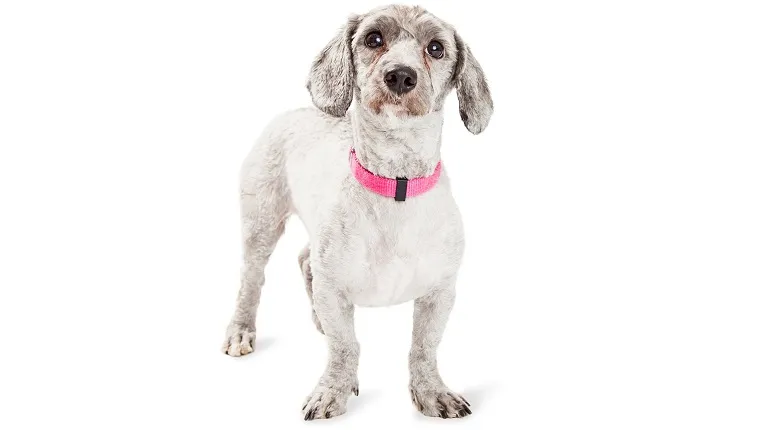Welcome to our comprehensive guide on the Doxiepoo, a charming blend of Dachshund and Poodle known for its spirited personality and adorable appearance. Whether you’re a prospective owner or simply curious about this hybrid breed, join us as we explore everything from their origins and unique characteristics to their care requirements, training tips, and health considerations. Get ready to fall in love with the delightful Doxiepoo!
Origins and History
The Rise of the Doxiepoo
The Doxiepoo, a cross between the Dachshund and Poodle breeds, has gained popularity in recent years as a designer dog known for its intelligence and affectionate nature. While exact origins can vary, the purposeful mixing of these breeds aims to combine desirable traits such as hypoallergenic coats and a friendly temperament.
Understanding Crossbreeding
Crossbreeding, when done responsibly and with consideration for health and temperament, can introduce diversity and reduce genetic predispositions found in purebred lines. The Doxiepoo exemplifies this trend, offering a blend of traits that appeal to a wide range of dog lovers seeking a companion with unique qualities.
Physical Characteristics
Appearance and Size
Doxiepoos can inherit a range of physical traits from their parent breeds. They typically have a small to medium-sized frame, often resembling a Dachshund with a Poodle-like coat. Sizes can vary depending on whether the Poodle parent was toy, miniature, or standard-sized, but they generally weigh between 10 to 30 pounds and stand around 8 to 15 inches tall at the shoulder.
Coat and Colors
One of the Doxiepoo’s most appealing features is its coat, which can vary from curly and wiry like a Poodle’s to smooth and sleek like a Dachshund’s. Common coat colors include black, white, cream, chocolate, and combinations thereof. Their coat may be hypoallergenic, making them suitable for some allergy sufferers, although individual allergen sensitivity can vary.
Temperament and Behavior
Playful and Affectionate
Doxiepoos are known for their playful and affectionate nature, inheriting the sociability of the Poodle and the loyal, spirited personality of the Dachshund. They thrive on companionship and enjoy spending time with their families, making them excellent pets for households with children and other pets.
Intelligence and Trainability
With their Poodle ancestry, Doxiepoos are intelligent and eager to please, making them relatively easy to train with positive reinforcement techniques. They respond well to consistency and patience, although they may exhibit a stubborn streak inherited from the Dachshund. Early socialization is key to shaping their behavior and ensuring they develop into well-rounded companions.
Health and Wellness
Potential Health Considerations
As with all breeds, Doxiepoos may be prone to certain health conditions inherited from their parent breeds. These can include:
- Patellar Luxation: A condition where the kneecap dislocates from its normal position, causing discomfort and lameness.
- Hip Dysplasia: An abnormal formation of the hip joint that can lead to arthritis and mobility issues.
- Progressive Retinal Atrophy (PRA): A degenerative eye disorder that can eventually lead to blindness.
Regular veterinary check-ups, a balanced diet, and maintaining a healthy weight are essential for promoting longevity and well-being in Doxiepoos.
Dietary Needs
Feeding a Doxiepoo should be tailored to their size, age, activity level, and individual health needs. High-quality dog food that provides essential nutrients and supports joint health is recommended. Avoid overfeeding and monitor treats to prevent obesity, which can exacerbate joint issues and other health problems.
Care and Grooming
Exercise Requirements
Doxiepoos have moderate exercise needs and enjoy daily walks, playtime, and interactive toys to keep them mentally stimulated. They thrive on attention and are happiest when engaged in activities with their families, making them suitable for both apartment living and homes with yards.
Grooming Tips
The grooming needs of a Doxiepoo depend on their coat type, which can range from low-shedding to moderate shedding. Regular brushing helps remove loose hair and prevents matting, especially for curly-coated Doxiepoos. Occasional bathing, nail trimming, and dental care are also important aspects of their grooming routine to maintain overall health and hygiene.
Living with a Doxiepoo
Family Compatibility
Doxiepoos are adaptable and thrive in homes where they receive love, attention, and opportunities for socialization. They are affectionate towards children and other pets when raised together from a young age. Their playful demeanor and loyalty make them excellent companions for families of all sizes.
Training Insights
Start training your Doxiepoo early to establish good behaviors and prevent undesirable habits. Positive reinforcement techniques such as treats and praise are effective in motivating them, while consistency and patience help reinforce desired behaviors. Remember to provide mental stimulation alongside physical exercise to keep them happy and well-adjusted.
Conclusion
The Doxiepoo combines the best traits of the Dachshund and Poodle breeds into a delightful package of intelligence, affection, and charm. Whether you’re drawn to their playful antics, hypoallergenic coat, or loving personality, owning a Doxiepoo promises a rewarding experience. Remember, responsible ownership includes providing proper care, training, and veterinary attention to ensure a fulfilling life for your Doxiepoo companion.
- Best Hunter.io Alternatives for 2025 - April 19, 2025
- Best Lead411 Alternatives for 2025 - April 19, 2025
- Best Leadzai Alternatives for 2025 - April 18, 2025



